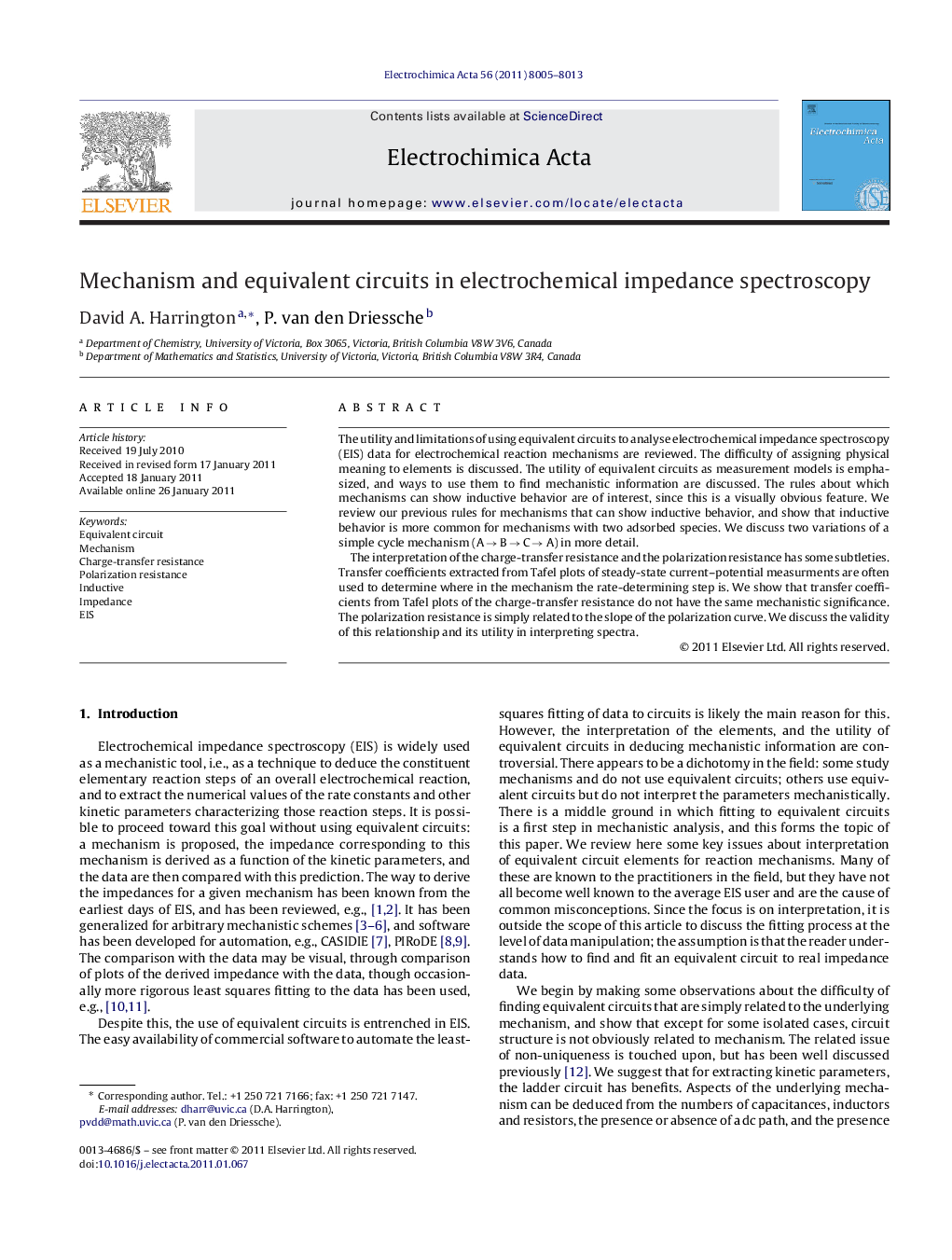| Article ID | Journal | Published Year | Pages | File Type |
|---|---|---|---|---|
| 190618 | Electrochimica Acta | 2011 | 9 Pages |
The utility and limitations of using equivalent circuits to analyse electrochemical impedance spectroscopy (EIS) data for electrochemical reaction mechanisms are reviewed. The difficulty of assigning physical meaning to elements is discussed. The utility of equivalent circuits as measurement models is emphasized, and ways to use them to find mechanistic information are discussed. The rules about which mechanisms can show inductive behavior are of interest, since this is a visually obvious feature. We review our previous rules for mechanisms that can show inductive behavior, and show that inductive behavior is more common for mechanisms with two adsorbed species. We discuss two variations of a simple cycle mechanism (A → B → C → A) in more detail.The interpretation of the charge-transfer resistance and the polarization resistance has some subtleties. Transfer coefficients extracted from Tafel plots of steady-state current–potential measurments are often used to determine where in the mechanism the rate-determining step is. We show that transfer coefficients from Tafel plots of the charge-transfer resistance do not have the same mechanistic significance. The polarization resistance is simply related to the slope of the polarization curve. We discuss the validity of this relationship and its utility in interpreting spectra.
